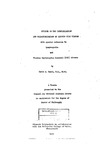Studies on the identification and characterisation of certain fish viruses with special reference to lymphocystis and piscine erythrocytic necrosis (PEN) viruses
| dc.contributor.author | Smail, David A. | |
| dc.contributor.other | School of Biological and Marine Sciences | en_US |
| dc.date.accessioned | 2011-09-22T10:40:24Z | |
| dc.date.accessioned | 2013-10-23T09:12:26Z | |
| dc.date.available | 2011-09-22T10:40:24Z | |
| dc.date.available | 2013-10-23T09:12:26Z | |
| dc.date.issued | 1979 | |
| dc.identifier | Not available | en_US |
| dc.identifier.uri | http://hdl.handle.net/10026.1/586 | |
| dc.description | This is a digitised version of a thesis that was deposited in the University Library. If you are the author and you have a query about this item please contact PEARL Admin (pearladmin@plymouth.ac.uk) | |
| dc.description | Metadata merged with duplicate record (http://hdl.handle.net/10026.1/2302) on 20.12.2016 by CS (TIS). | |
| dc.description.abstract |
Studies were performed on two types of infection of teleost fish where viruses have been observed by electron microscopy: erythrocytic infections in the Atlantic Cod (Gadus morhua) and the Common Blenny (Blennius hpo lis) and lymphcystis disease., Searches were made for new, isolations of these infections Ja British coastal waters and on shores chiefly in the vicinity of Plymouth and Aberystwyth. In the absence of disease symptoms, the blood of fish was, screened for the presence of viral inclusion bodies by standard haematological methods. PEN in cod was found in the North Sea-. and in the Celtic Sea off southern Eire, thus extending the previous distribution data from the Atlantic-coastal waters. of North America. The blenny infection was also found in new sites on shores in the vicinity of Plymouth. Moreover, the cytology of these infectionswas as had been previously described. Collection data for the PEN infections showed an inverses; - relationship of infection incidence-with age for cod sample populations but no correlation was found for blenny sample populations. In addition, no external disease symptoms were observed in either type of infection. Concerning the recognition of the blenny infection, observations from maintaining blennies suggested the length of the natural infection might be inversely related to temperature; non-experimental longevities are quoted in this connection. The degree of infection in individual fish was estimated by light microscopy and the estimates for both erythrocytic infections cover the range 1-60% infection. Attempts were made to propagate the viruses in vitro using fish cell and organ cultures. Primary cell cultures were originated from tissues of the Blenny, Flounder, Plaice and Dab using the protocol in the literature for marine fish cell culture. Vigorous cell outgrowth was observed in the flounder cultures and in these the time to confluence was only 3-5 days. However, established secondary cultures could not be derived from tissues of either species. Plaice and dab cultures were used for virus inoculation but the virus from the blenny infection and lymphocystis virus could not be propagated. , Organ cultures were set up using skin blocks from the Flounder. With tris-buffered maintenance medium such cultures maintained histological integrity for 15 days. However, one - trial inoculation with lymphocystis virus showed no-integration or multiplication of the virus in the tissue. In connection with attempts to induce the blenny infection, the. effect of high temperature-in the Blenny was investigated. The infection was not induced over a9 day holding period but lytic effects on the erythrocyte nuclei were observed. The effect of the drug acetylphenylhydrazine (APH) in the Blenny was also investigated with the aim of reproducing its reported action of anaemia induction and ensuing erythropoiesis. Marked anaemia was produced but not erythropoiesis. However, this result could not nesessarily be interpreted as the effect of APH alone. The viruses were identified and characterized with emphasis on their mophology, using ultrathin sectioning, negative staining and shadowing methods. It was concluded that the virus from the Blenny and lymphocystis virus conform to the structural measurements in the literature but negative staining indicated that both viruses display unique core structures. These are discussed in the light of the knowledge of other DNA virus cores. The position of these viruses is further considered with respect to their classification in the virus family Iridoviridae. | en_US |
| dc.description.sponsorship | University College of Wales, Aberystwyth | en_US |
| dc.language.iso | en | en_US |
| dc.publisher | University of Plymouth | en_US |
| dc.title | Studies on the identification and characterisation of certain fish viruses with special reference to lymphocystis and piscine erythrocytic necrosis (PEN) viruses | en_US |
| dc.type | Thesis | en_US |
| dc.identifier.doi | http://dx.doi.org/10.24382/1354 | |
| dc.identifier.doi | http://dx.doi.org/10.24382/1354 |
Files in this item
This item appears in the following Collection(s)
-
01 Research Theses Main Collection
Research Theses Main



